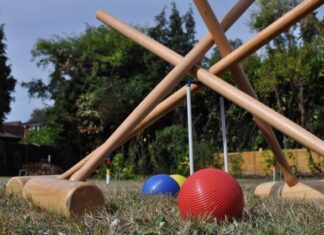 During the daytime of June 6, a rare phenomenon called the transit of Venus will occur. This will be seen across Australia, weather permitting.
During the daytime of June 6, a rare phenomenon called the transit of Venus will occur. This will be seen across Australia, weather permitting.
You can see Venus travelling across the face of the Sun for about six and half hours, starting about 8.15am and ending about 2.45pm on Wednesday, June 6.
Twinstar Guesthouse & Observatory at Ballandean will be open for this rare astronomical event from 10am to 12pm to provide the opportunity for the public to see the transit of Venus. Anyone can just drop in and have a look at this rare phenomenon.
Eclipse glasses will be available for purchase for $4 at the observatory. These glasses will be handy for the next solar eclipse on November 14 this year.
The transit of Venus occurs when Venus passes directly between the Earth and the Sun so that, as seen from the Earth, Venus appears to pass across the surface of the Sun.
When the Sun, Venus and Earth are perfectly aligned, the Sun will be eclipsed by Venus.
But, unlike a solar eclipse by the Moon, Venus will not eclipse the entire Sun because it is much further and appears much smaller than the Moon.
What we will see is Venus slowly crossing the face of the Sun as it overtakes the Earth.
Since first recognised in 1639, it has occurred six times; in 1761, 1769, 1874, 1882, and the most recent in 2004.
The next event occurs in 2117 followed by another in 2125, eight years later. So, if you miss this year’s event, you will have to wait for 105 years; literally, this will be your once-in-your-lifetime experience.
How can you see this event? There are mainly three ways to observe it. Whichever method you use, never look directly at the Sun without a special filter or it may cause serious damage to your eye.
The first method is naked-eye viewing through a special filter or a pair of eclipse glasses. To check if this method works for you, draw a 2mm-diameter black dot on a white sheet of paper. If you can see this dot seven metres away, you will probably be able to see Venus as a black dot against the bright disk of the Sun.
Secondly, if you have a telescope or binoculars, you can project the Sun’s disk onto a white sheet of paper. You can adjust the size of the Sun by changing the distance between the eyepiece and the paper.
This is the safest and easiest way to observe this event. Although you don’t need any filter, make sure that your eyepiece does not have any plastic part inside it. Plastic will melt very quickly when the sunlight is focused on it.
Also, avoid using an expensive eyepiece or binoculars. The Sun’s intense heat can damage the lenses.
Thirdly, you can also buy a sheet of special filter, which can be attached to the front end of the telescope or binoculars. In this case, you can directly look into the eyepiece. But make sure the filter does not have any tear or cut. These filters are available online from telescope shops.
For more information, visit the transit of Venus website at www.transitofvenus.com.au The transit will be broadcast live on this website.
Get the latest news to your email inbox FREE!
REGISTER




